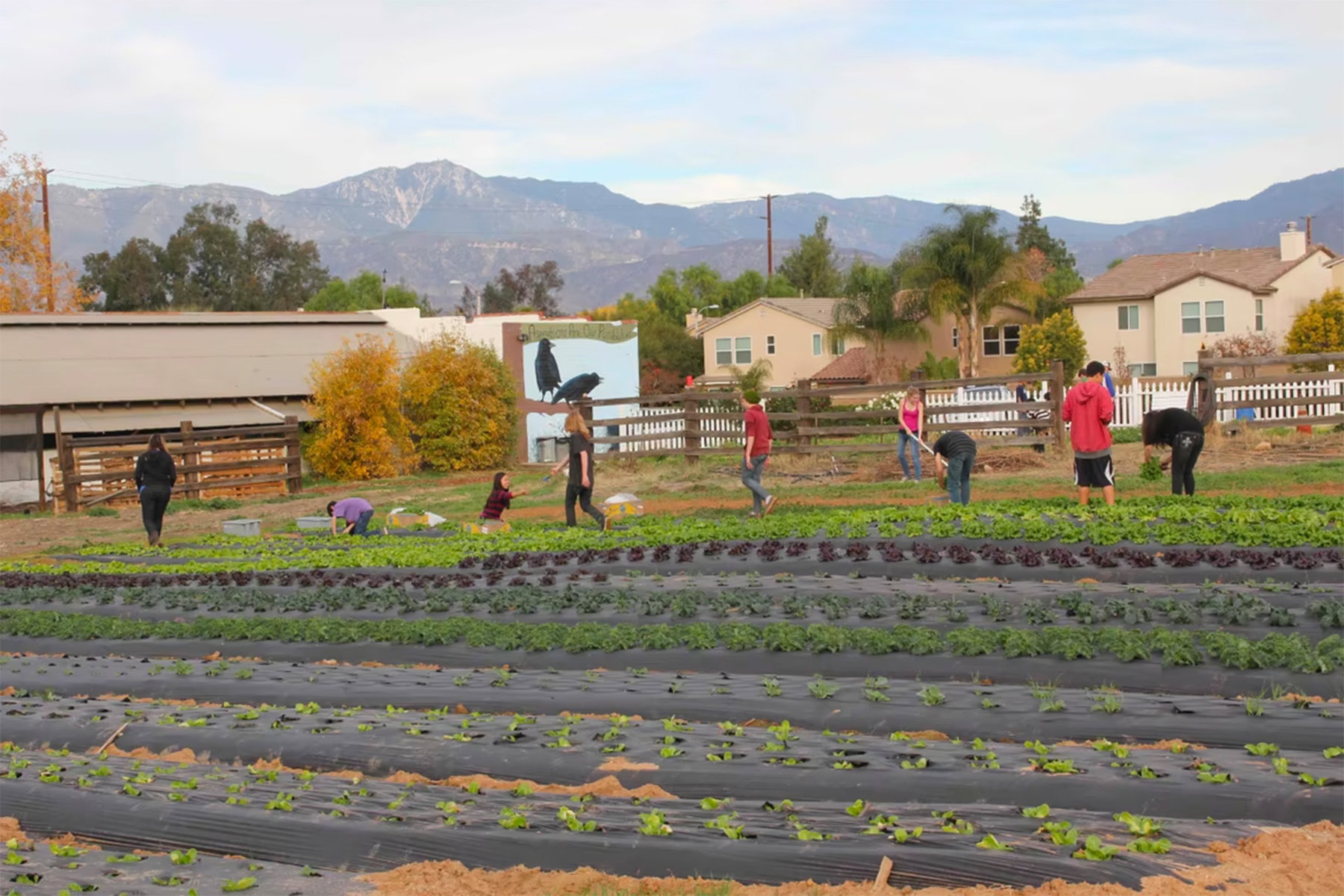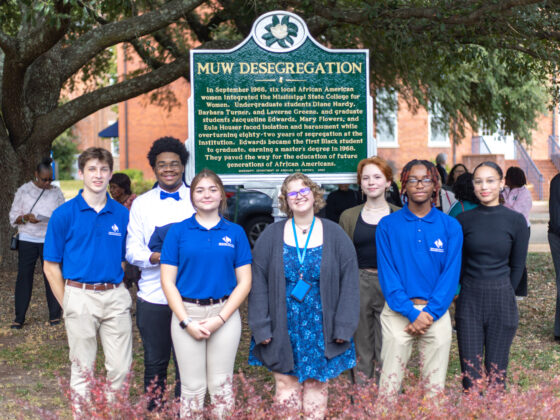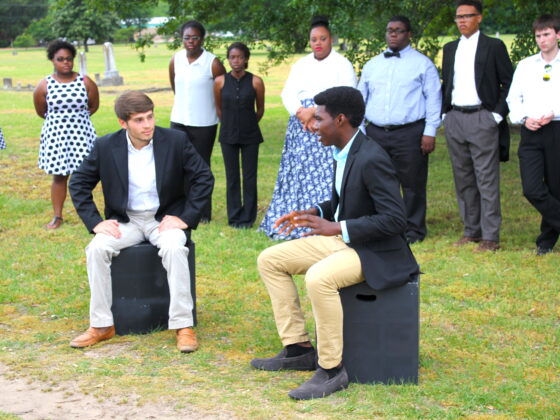We arrived at The Grove School in Redlands, California, just before their winter break, at about noon and right in time for lunch.
The Grove School is a public charter school with about 200 students in grades 7 through 12. It follows the Montessori system, and it adjoins a private Montessori elementary school. The complex has citrus groves on one side and pastures, livestock enclosures, farm buildings, and vegetable gardens on the other. The effect is of a rural-area school that happens to be on the edge of a city.
Grove is a fairly new school in Redlands, graduating its first class in 2002. When my husband, Jim, grew up in the town, every student from every corner of the town went to its one high school, Redlands High. As the area grew, the RHS enrollment became unmanageably large. When Jim graduated in the late 1960s, he had 800+ classmates; a generation later, the town’s population had doubled, from around 35,000 to nearly 70,000, and the school was swollen too. Now two more 4-year public high schools have opened: Redlands East Valley in 1997, with an enrollment of about 2300 in grades 9 – 12, and Citrus Valley High School, which graduated its first class in 2012. Redlands High itself now has about 2300 students in grades 9 – 12.

Grove was founded in 1999 by a small number of teachers and parents who were interested in continuing the Montessori experience where their kids had thrived in lower grades. And in the spirit of generosity and participation that Redlanders consider a hallmark of the town, lots of people have pitched in to build or remodel the buildings and grounds of the school, which sits in the newly-designated Heritage Park historical district in Redlands

After lunch, Gena Engelfried, the head of the school, turned us over to a few groups of students, to tour us around and tell us about their school.
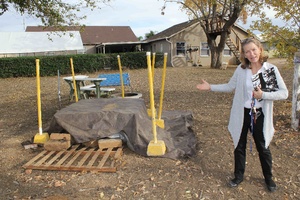
The high schoolers were excited to talk to us about what they call Praxis, a project they do every trimester, which centers on a philosophical question, the integration of that question into each of their academic classes, and a final paper and group project. They just finished up “How do machines influence society?” and the next trimester’s question “How are belief systems formed?” had just been announced that morning.
The principal described that Grove followed a “place based approach to learning.” As I interpreted that, it means that the curriculum and activities of the school integrate with the town and its natural environment. I’ve been going to Redlands myself since the late 1960s, and I would describe place based for Redlands to include oranges, farming, mountains, canyons, and a distinct feeling of being in The West. After visiting Grove, I would say that the school indeed honors those elements of place, while operating in an academic environment that is, after all, preparing its students for college.

As a very small school that can’t naturally support the many traditional sports teams and productions that big high schools can, the Grove community does a lot of creative improvising. They do have a handful of sports teams, including coed soccer, girls volleyball and basketball, boys basketball, and archery, of which Redlands has a long tradition. To a student, each one recited a long list of nonacademic activities, from familiar ones like ballet, photography, choir, and piano to others like blacksmithing, forging, and (reminding us Redlands is really part of the West) bullwhip.
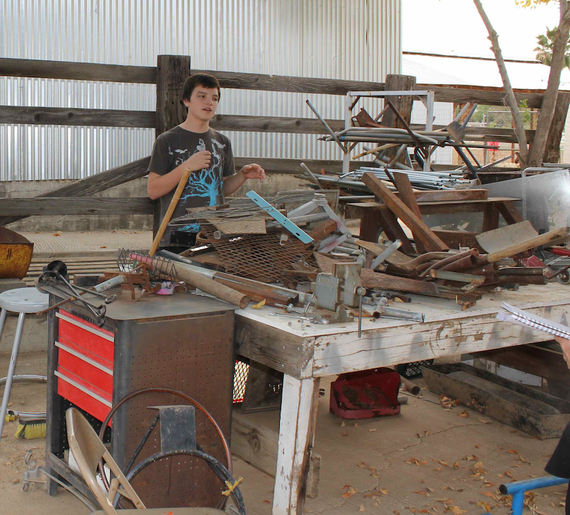
Students are highly encouraged to do 30 hours of service and 40 hours of internship each year. Those activities the kids described ranged from coaching kids’ soccer, to volunteering at the Redlands Community Hospital, the animal clinic, the Cold Weather Shelter, and working at a dry cleaners, steaming clothes and handling the register.
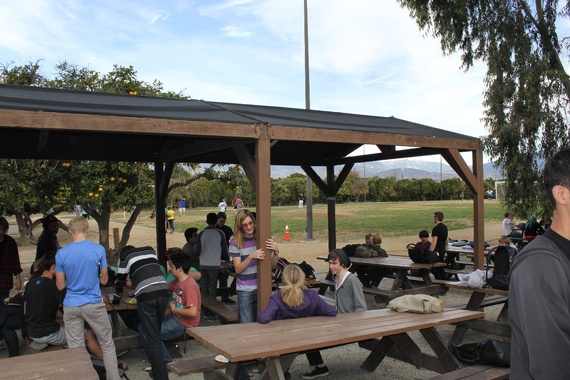
Last year, every graduate went on to higher education, mostly to colleges in the California systems or other schools on the west coast. Besides heading for college, a few other students head in less traditional directions, to culinary school or acting school. The student profile of Grove is very different from that of the public schools. Grove attracts students who, for a large variety of reasons, are seeking a non-traditional school. It is, remember, a public school, and places are awarded by lottery, although preference is given to children of its founders, siblings of those enrolled, and those who have previously been in the Montessori system, numbering about 25%. There is a waiting list.

I don’t think the kids were singled out to guide us around; they seemed to be plucked as random students who were free at the time we appeared. And second, these kids loved their school, and even those whom I would easily describe as cool and edgy – and I mean really cool and really edgy—were comfortable talking freely about how much they loved their school.
Two of the boys were describing in detail the traditional graduation exercises from middle to high school, which Grove calls the Bridge Ceremony, where the whole school participates in the symbolic crossing of the footbridge between the middle and high school campuses. One boy described how he nearly broke down with emotion when he, as an 8th grader, was charged to describe “his” 9th grader graduating to the high school, who had been a real friend and model for him. When we asked another boy to reflect on his years at Grove, he said, “I would recommend it to myself 1000 times over”.
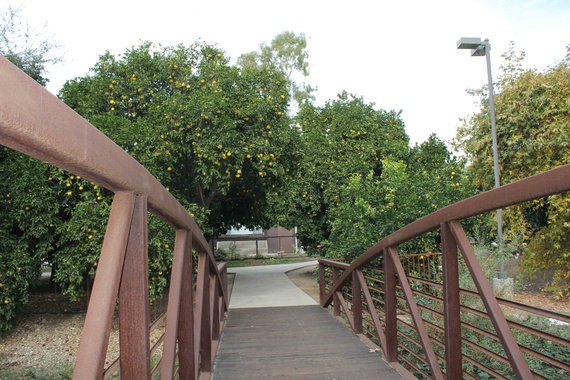
We also toured the Farm, with several middle schoolers. They showed us their working farm, where they spent much of their time tending all aspects of the animals and crops. The kids decide what animals they want to raise for the year, with the explicit directive that the animals are not pets, but are farm animals, which will be sold off at the end of the year to help support the Farm. They have had rabbits, goats, pigs, sheep, and chickens. This year’s turkeys were gone by Thanksgiving. They once had alpacas, which proved to be far too much work for the return of their wool. With middle schoolers’ jittery humor, they broke in on each others’ descriptions of one boy who particularly loved the alpaca; they nicknamed him the “alpaca whisperer” and told how he once missed class because he fell asleep among the alpaca.
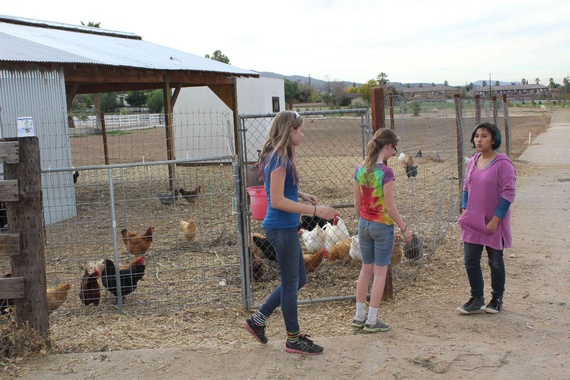
On that warm winter afternoon, the Farm’s middle schoolers were harvesting 120 heads of lettuce, red leaf, green leaf, and romaine, which they had contracted to sell to a locally beloved family-owned grocery store called Gerrard’s.

The road to the Grove’s success has come with some controversy. This fall, the school filed for the fourth renewal of its charter, which expires next summer. A complicated and somewhat fraught back-and-forth has ensued among the school, San Bernardino County, and the Redlands Unified School District, which holds the charter and is responsible for its finances and student achievement. As of December, no conclusion was reached, and another hearing on new school documents that would speak to a new set of requirements that came into being during the ongoing negotiations is scheduled for February.
Photos by James Fallows

